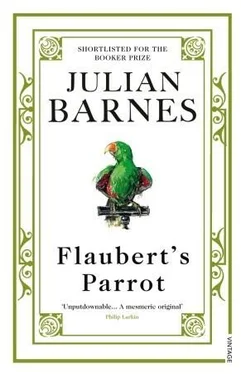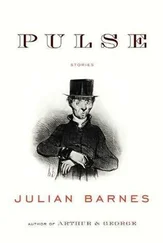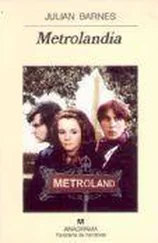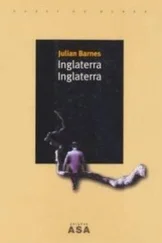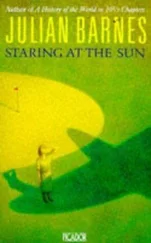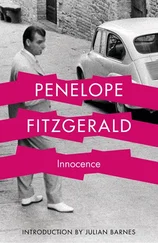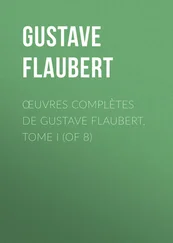Julian Barnes - Flaubert's Parrot
Здесь есть возможность читать онлайн «Julian Barnes - Flaubert's Parrot» весь текст электронной книги совершенно бесплатно (целиком полную версию без сокращений). В некоторых случаях можно слушать аудио, скачать через торрент в формате fb2 и присутствует краткое содержание. Город: New York, Год выпуска: 2011, ISBN: 2011, Издательство: Vintage International, Жанр: Современная проза, на английском языке. Описание произведения, (предисловие) а так же отзывы посетителей доступны на портале библиотеки ЛибКат.
- Название:Flaubert's Parrot
- Автор:
- Издательство:Vintage International
- Жанр:
- Год:2011
- Город:New York
- ISBN:9780307797858
- Рейтинг книги:4 / 5. Голосов: 1
-
Избранное:Добавить в избранное
- Отзывы:
-
Ваша оценка:
- 80
- 1
- 2
- 3
- 4
- 5
Flaubert's Parrot: краткое содержание, описание и аннотация
Предлагаем к чтению аннотацию, описание, краткое содержание или предисловие (зависит от того, что написал сам автор книги «Flaubert's Parrot»). Если вы не нашли необходимую информацию о книге — напишите в комментариях, мы постараемся отыскать её.
is by turns moving and entertaining, witty and scholarly, and a tour de force of seductive originality.
Flaubert's Parrot — читать онлайн бесплатно полную книгу (весь текст) целиком
Ниже представлен текст книги, разбитый по страницам. Система сохранения места последней прочитанной страницы, позволяет с удобством читать онлайн бесплатно книгу «Flaubert's Parrot», без необходимости каждый раз заново искать на чём Вы остановились. Поставьте закладку, и сможете в любой момент перейти на страницу, на которой закончили чтение.
Интервал:
Закладка:
But I have. Not just a theory, either. As I say, it took me a good two years. No, that’s boastful: what I really mean is that two years elapsed between the question arising and dissolving. One of the snobbier academics to whom I wrote even suggested that the matter wasn’t really of any interest at all. Well, I suppose he has to guard his territory. Someone, however, gave me the name of M. Lucien Andrieu.
I decided not to write to him; after all, my letters so far hadn’t proved very successful. Instead, I made a summer trip to Rouen, in August 1982. I stayed at the Grand Hôtel du Nord, abutting the Gros Horloge. In the corner of my room, running from ceiling to floor, was a soil-pipe, inefficiently boxed-in, which roared at me every five minutes or so, and appeared to carry the waste of the entire hotel. After dinner I lay on my bed listening to the sporadic bursts of Gallic evacuation. Then the Gros Horloge struck the hour with a loud and tinny closeness, as if it were inside my wardrobe. I wondered what the chances of sleep might be.
My apprehension was misconceived. After ten o’clock, the soil-pipe went quiet; and so did the Gros Horloge. It may be a tourist attraction in the daytime, but Rouen thoughtfully disconnects its chimes when visitors are trying to sleep. I lay in bed on my back with the lights out and thought about Flaubert’s parrot: to Félicité, it was a grotesque but logical version of the Holy Ghost; to me, a fluttering, elusive emblem of the writer’s voice. When Félicité lay in bed dying, the parrot came back to her, in magnified form, and welcomed her into Heaven. As I teetered off towards sleep, I wondered what my dreams might be.
They weren’t about parrots. I had my railway dream instead. Changing trains at Birmingham, some time during the war. The distant guard’s van at the end of the platform, pulling out. My suitcase rubbing at my calf. The blacked-out train; the station dimly lit. A timetable I couldn’t read, a blur of figures. No hope anywhere; no more trains; desolation, darkness.
You’d think such a dream would realise when it had made its point? But dreams have no sense of how they’re going down with the dreamer, any more than they have a sense of delicacy. The station dream – which I get every three months or so – simply repeats itself, a loop of film endlessly rerunning, until I wake up heavy-chested and depressed. I awoke that morning to the twin sounds of time and shit: the Gros Horloge and my corner soil-pipe. Time and shit: was Gustave laughing?
At the Hôtel-Dieu the same gaunt, white-coated gardien showed me round again. In the medical section of the museum, I noticed something I had missed before: a do-it-yourself enema pump. As hated by Gustave Flaubert: ‘Railways, poisons, enema pumps, cream tarts…’ It consisted of a narrow wooden stool, a hollow spike and a vertical handle. You sat astride the stool, worked your way on to the spike, and then pumped yourself full of water. Well, at least it would give you privacy. The gardien and I had a conspiratorial laugh; I told him I was a doctor. He smiled and went to fetch something sure to interest me.
He returned with a large cardboard shoebox containing two preserved human heads. The skin was still intact, though age had turned it brown: as brown as an old jar of redcurrant jam, perhaps. Most of the teeth were in place, but the eyes and hair had not survived. One of the heads had been re-equipped with a coarse black wig and a pair of glass eyes (what colour were they? I can’t remember; but less complicated, I’m sure, than the eyes of Emma Bovary). This attempt to make the head more realistic had the opposite effect: it looked like a child’s horror mask, a trick-or-treat face from a joke-shop window.
The gardien explained that the heads were the work of Jean-Baptiste Laumonier, predecessor of Achille-Cléophas Flaubert at the hospital. Laumonier was looking for new methods of preserving corpses; and the city had allowed him to experiment with the heads of executed criminals. An incident from Gustave’s childhood came back to me. Once, out on a walk with his Oncle Parain at the age of six, he had passed a guillotine which had just been used: the cobbles were bright with blood. I mentioned this hopefully; but the gardien shook his head. It would have been a nice coincidence, but the dates were incompatible. Laumonier had died in 1818; besides, the two specimens in the shoebox had not in fact been guillotined. I was shown the deep creases just below the jaw where the hangman’s noose had once tightened. When Maupassant saw Flaubert’s body at Croisset, the neck was dark and swollen. This happens with apoplexy. It’s not a sign that someone had hanged himself in the bath.
We continued through the museum until we reached the room containing the parrot. I took out my Polaroid camera, and was allowed to photograph it. As I held the developing print under my armpit, the gardien pointed out the Xeroxed letter I had noticed on my first visit. Flaubert to Mme Brainne, July 28th, 1876: ‘Do you know what I’ve had on my table in front of me for the last three weeks? A stuffed parrot. It sits there on sentry duty. The sight of it is beginning to irritate me. But I keep it there so that I can fill my head with the idea of parrothood. Because at the moment I’m writing about the love between an old girl and a parrot.’
‘That’s the real one,’ said the gardien , tapping the glass dome in front of us. ‘That’s the real one.’
‘And the other?’
‘The other is an impostor.’
‘How can you be sure?’
‘It’s simple. This one comes from the Museum of Rouen.’ He pointed to a round stamp on the end of the perch, then drew my attention to a photocopied entry from the Museum register. It recorded a batch of loans to Flaubert. Most of the entries were in some museum shorthand which I couldn’t decipher, but the loan of the Amazonian parrot was clearly comprehensible. A series of ticks in the final column of the register showed that Flaubert had returned every item lent to him. Including the parrot.
I felt vaguely disappointed. I had always sentimentally assumed – without proper reason – that the parrot had been found among the writer’s effects after his death (this explained, no doubt, why I had secretly been favouring the Croisset bird). Of course the photocopy didn’t prove anything, except that Flaubert had borrowed a parrot from the Museum, and that he’d returned it. The Museum stamp was a bit trickier, but not conclusive…
‘Ours is the real one,’ the gardien repeated unnecessarily as he showed me out. It seemed as if our roles had been reversed: he needed the reassurance, not me.
‘I’m sure you’re right.’
But I wasn’t. I drove to Croisset and photographed the other parrot. It too sported a Museum stamp. I agreed with the gardienne that her parrot was clearly authentic, and that the Hôtel-Dieu bird was definitely an impostor.
After lunch I went to the Cimetière Monumental. ‘Hatred of the bourgeois is the beginning of all virtue,’ wrote Flaubert; yet he is buried amongst the grandest families of Rouen. During one of his trips to London he visited Highgate Cemetery and found it far too neat: ‘These people seem to have died with white gloves on.’ At the Cimetière Monumental they wear tails and full decorations, and have been buried with their horses, dogs and English governesses.
Gustave’s grave is small and unpretentious; in these surroundings, however, the effect is not to make him look an artist, an anti-bourgeois, but rather to make him look an unsuccessful bourgeois. I leaned against the railings which fence off the family plot – even in death you can own a freehold – and took out my copy of Un cœur simple . The description Flaubert gives of Félicité’s parrot at the start of chapter four is very brief: ‘He was called Loulou. His body was green, the ends of his wings pink, his forehead blue, and his throat golden.’ I compared my two photographs. Both parrots had green bodies; both had pink wing-tips (there was more pink in the Hôtel-Dieu version). But the blue forehead and the golden throat: there was no doubting that they belonged to the parrot at the Hôtel-Dieu. The Croisset parrot had it completely back to front: a golden forehead and bluish-green throat.
Читать дальшеИнтервал:
Закладка:
Похожие книги на «Flaubert's Parrot»
Представляем Вашему вниманию похожие книги на «Flaubert's Parrot» списком для выбора. Мы отобрали схожую по названию и смыслу литературу в надежде предоставить читателям больше вариантов отыскать новые, интересные, ещё непрочитанные произведения.
Обсуждение, отзывы о книге «Flaubert's Parrot» и просто собственные мнения читателей. Оставьте ваши комментарии, напишите, что Вы думаете о произведении, его смысле или главных героях. Укажите что конкретно понравилось, а что нет, и почему Вы так считаете.
